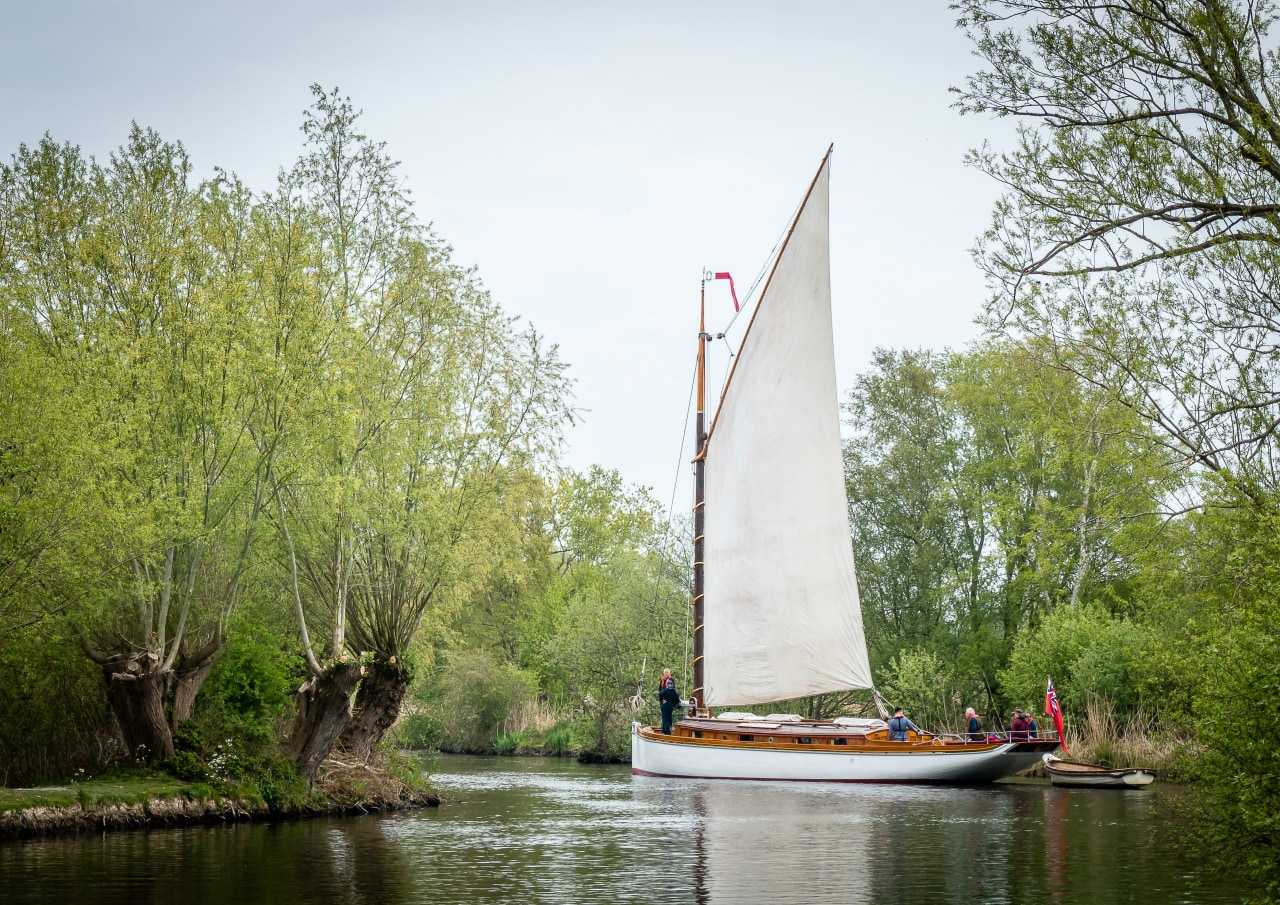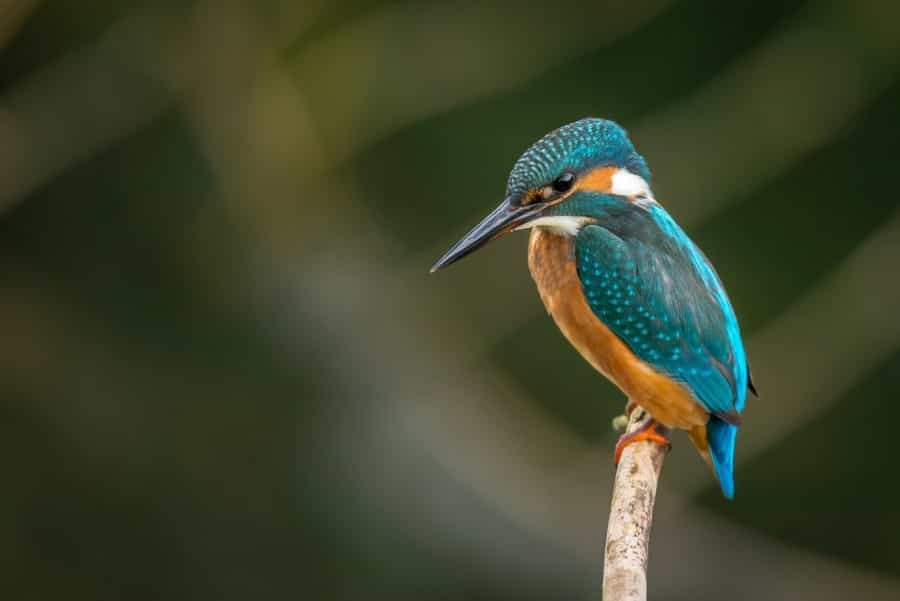The Broads Wildlife Watching

East Anglia is renowned for being a haven for biodiversity, and nowhere more so than the Norfolk Broads. The Broads National Park has a range of precious habitats, unique landscapes and nature-rich waterways – while the area is perhaps best known for its birds, it's also home to fascinating flora, insects and fish. This page covers the Norfolk Broads' most exciting wildlife highlights, with information on where to see them and the best times of year to visit, plus tips for successful wildlife safaris and how you can support conservation.
Prime wildlife-watching locations
There are dozens of nature reserves and undisturbed wetlands to discover in the Broads. We’ve listed some of our favourites below.
Hickling Broad (open in Google Maps)

The largest of the Broads, this National Nature Reserve is popular with walkers, wildlife watchers and watersports enthusiasts. With easy access, great facilities and a wide range of species, it’s understandably a must-visit location for many coming to the national park.
What you might see
-
Common cranes – Hickling is one of the few places in Britain where you can see the common crane in the wild. They are spotted here during the winter, when they are often seen roosting as the sun goes down.
-
Bitterns – Among the UK’s rarest birds, bitterns are well camouflaged. Their distinctive ‘booming’ call is unmistakable and almost as exciting as a visual sighting.
Facilities and practicalities
Hickling Broad has a visitor centre, runs summer wildlife boat tours and has free car parking (although there is a charge to enter the reserve itself). Unfortunately, dogs are not permitted.
How Hill Nature Reserve (open in Google Maps)

Known for its range of habitats – with reedbeds, woodlands and lowland marshes that teem with wildlife – How Hill Nature reserve is another top location for seeing rare species. Located within the River Ant valley near Ludham Bridge, this peaceful place has a decidedly modern approach to educating the public, boasting an augmented-reality nature trail that you can access using your phone and an eco-friendly electric boat that’s used for nature tours.
What you might see
-
Swallowtail butterflies – How Hill Nature Reserve offers the chance to see the largest of Britain’s butterflies, known for their striking black and yellow wings. Found throughout the Broads, they thrive at this nature reserve, playing a crucial role in the ecosystem by helping to pollinate native plants.
-
Marsh harriers – Known for their low-flying hunting style, these impressive birds of prey once faced extinction in Britain due to persecution but have since bounced back. Conservation efforts have been particularly successful at How Hill and in the wider Broads, where there are now several hundred breeding pairs.
Facilities and practicalities
This nature reserve has free parking, free boat mooring and a picnic area. There is also a tea room (open in the afternoon in the high season) and hour-long boat trips on the Electric Eel are available between April and October. Dogs are not allowed in the nature reserve itself, but they can visit the adjacent gardens.
Strumpshaw Fen RSPB Reserve (open in Google Maps)

Just six miles from Norwich and easily accessed by public transport, this accessible nature reserve on the river Yare is one of the best for birdwatching, especially during migratory periods.
What you might see here
-
Kingfishers – These colourful birds can sometimes be glimpsed mid-flight as they dash from one waterway to the next. To see one, you’ll have to stay alert, though – blink and they’re gone.
-
Otters – The quiet backwaters of this nature reserve are one of the places in Norfolk where otters are most often spotted throughout the year.
Facilities and practicalities
Strumpshaw Fen has parking, bird hides and a visitor centre. It’s within walking distance of Brundall, where regular bus and train services are available and there are lots of cafés and pubs for refreshments. Although dogs are not allowed at the fen, they are welcome at RSPB Buckenham Marshes just next door.
Seasonal wildlife highlights
Regardless of the time of year that you decide to visit the Norfolf Broads, there's always something for you. The great variance in wildlife depending on the season means you’ll encounter different birds, plants, and animals each time, making every visit unique and exciting.
Winter

Many people believe that winter is a dead time for wildlife, but in Norfolk this couldn’t be further from the truth. This chilly time of year is when large numbers of migrating birds can be seen in the Broads. Those arriving in the greatest numbers include pink-footed geese, most of which return here from Iceland after spending summer in the north. You might also spot cranes and wigeons, both of which are rarely spotted elsewhere in the UK at this time of year.
Spring

Butterflies, moths and other insects start becoming more noticeable as the weather warms up in spring, including rare species like green hairstreaks and grizzled skippers. It’s also a very special time of year for the Broads’ flora, with highlights including bluebells (particularly spectacular in the area’s many woodland and parkland habitats) and more unusual flora like the marsh fern, a rare variety that can only be found in wet, alkaline habitats.
Summer

As the days grow longer and the temperature heats up, more and more dragonflies can be seen buzzing over the Broads, including our largest variety, the emperor dragonfly. Elsewhere, you may spot delicate, snow-white little egrets wading through the water in search of prey, or hear cuckoos making their presence known from the top of trees and hedgerows.
Autumn

As the trees and reeds change colour, the great migration of birds begins, with summer visitors departing and overwintering species arriving, often in impressive numbers. This season of change is also when you’ll hear the sound of rutting deer – herds can often be spotted at Hickling Broad, Strumpshaw Fen and, a few miles away on the North Norfolk coast, at the Holkham Estate.
Wildlife-watching tips
-
Binoculars will be a useful tool if you’re looking for birds and mammals – but don’t underestimate your ears and eyes. Binoculars are only useful for zooming in on creatures you have already spotted – it’s unlikely that using them to scan the horizon will lead to great results.
-
Wear inconspicuous clothing and natural colours to help blend in. In addition, try to tread lightly and speak softly as you approach areas where wildlife is likely to be present.
-
Dawn and dusk are often the busiest times of day for birds – set your alarm a little earlier than normal and you will be rewarded with the music of the dawn chorus.
-
Use your phone to record unfamiliar bird calls, check out what species are present when you’re visiting or download bird ID apps like eBird and Merlin.
-
Leave bird hides as you found them and treat any equipment in them with respect. Say hello to other wildlife watchers, but remember to keep the noise down.

Conservation and participation
There are lots of ways you can get involved with wildlife conservation in the Norfolk Broads. You might want to consider:
-
Joining a local conservation charity like the Norfolk Wildlife Trust – you’ll get free entry to some of the area’s best wildlife hotspots (including Hickling Broad) and help fund education and conservation efforts in the local community.
-
Attending events organised by the RSPB – there are frequent workshops, walks and other activities for all ages groups around Norfolk and beyond, with all funds raised going back into protecting the local environment.
- Consider volunteering with charities like the National Trust – they have lots of volunteer opportunities available, with time commitments ranging from long-term roles to just a few hours. Alternatively, check local social media groups to see if there are any beach cleans, litter picks or wildlife surveys you can get involved in during your stay.
Staying in the Norfolk Broads
Outdoor holidays are a great way to enjoy all of the wildlife of the Norfolk Broads while minimising your impact on the environment. Whether you’re travelling in a tent, touring in a campervan, after a posh glampsite or want to rent self-catering accommodation in the open air, Pitchup.com has a wide range of solutions to suit all tastes and budgets.